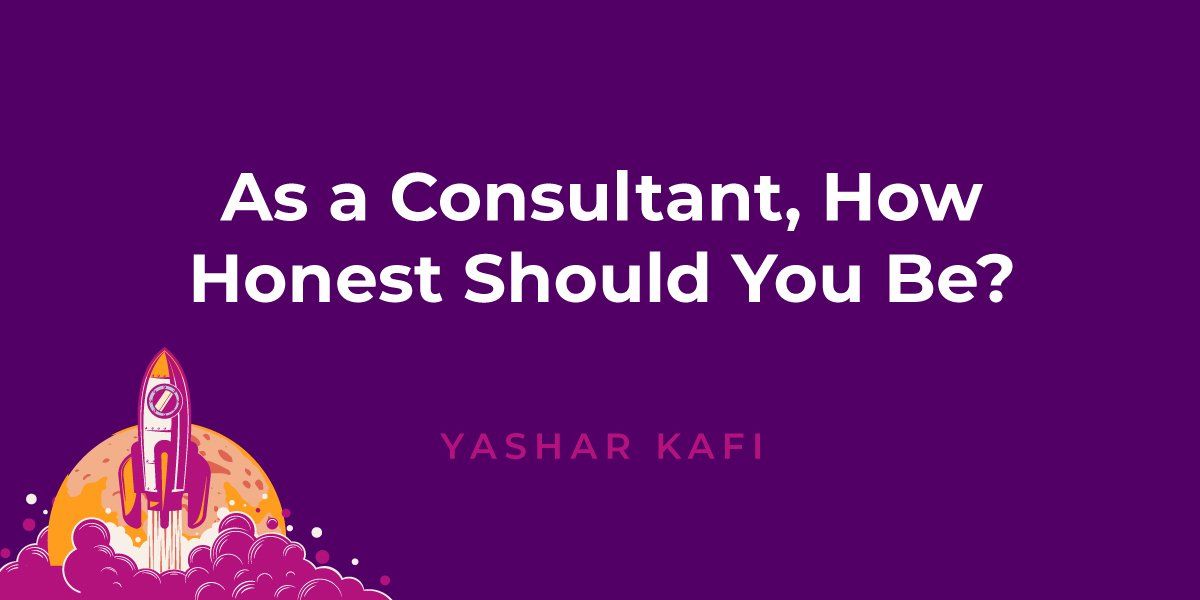As a Consultant, How Honest Should You Be?
Have you ever watched a company make bad decisions? I have, and it is maddening, especially due to my chosen profession.
As a consultant, you don’t always witness or personally experience the outcomes of bad business decisions. But when you do, you can’t help but ask yourself: “Should I tell them they are making mistakes or keep my head down and continue to work on transforming their business through my consultant work without interfering?” It’s a tough call and one that I often face, unfortunately, albeit on a sliding scale of just how bad (or disastrous) these decisions have the potential to be.
It’s like when your best friend is marrying the wrong person. Talk about a landmine. Do you say something? And if you do brave that step and voice concern, how are you supposed to go about it? Is there even a “good” way?
Since I deal with this type of dilemma often in my work, I thought it would be a perfect opportunity to address how it pertains to consultancy in particular. As a consultant, how honest should you be?
Honesty Is the Best Policy
I think you should always be honest, 100%. However, I will add a caveat to this answer by directly following it with the need for that honesty to be delivered tactfully. Because let’s face it: Honesty—the hard truth—can be tough to hear.
There is a way that you can be honest and tell someone (in consultancy, this will be your clients, most likely) the truth in a manner that is not harsh or abrupt. A lead-in I like to use that has served me well is simply pointing out: “Hey, here are some of my observations… .” This separates you from attacking the actual person you are talking to since you are presenting them with things you see in a neutral, factual way. They can then take and use your feedback (or throw it out entirely) as they may.
This allows me to know that I have done my job and what I feel is best for my clients—by being honest with them and giving them all the facts I see to make the most informed (and hopefully the wisest) choices. Now, what they do with that truthful information I have provided tactfully and neutrally is up to them. That is out of my control, as it is out of yours as well.
After hearing your thoughts, whether they fire you or keep you around, shows the readiness or willingness of that company to want to learn from their mistakes and to want to grow and be better. If they simply dismiss it and say, “Hey, thanks for your time; you’re fired,” you can chalk it up to that company not being willing or ready to hear the truth and change. Either way, it is a risk you take, but one that will let you rest at night, knowing that as a consultant, you did what was right by your client and made your profession proud.
Politician and author Andrew Thomas sums it up best: “A consultant, to be worth his salt, must give honest judgments, not necessarily those which he thinks the clients would like to hear.”




